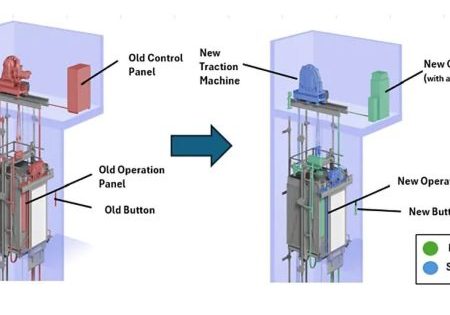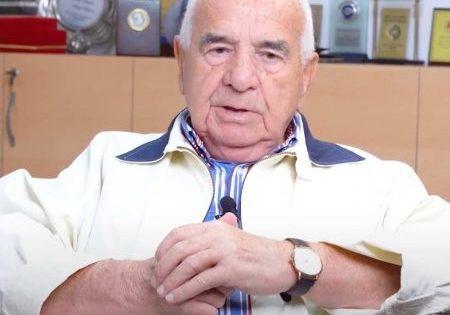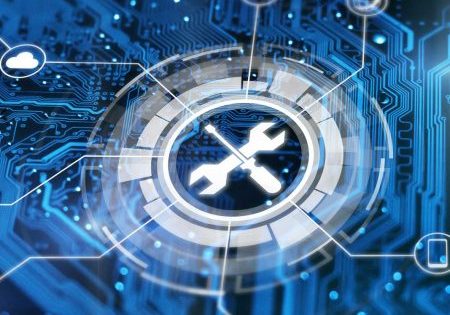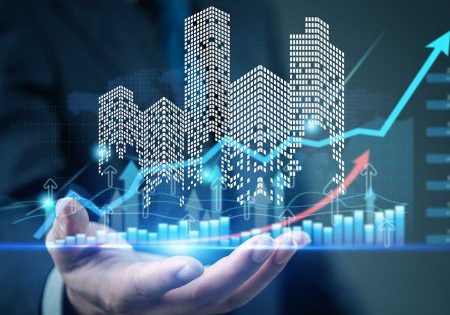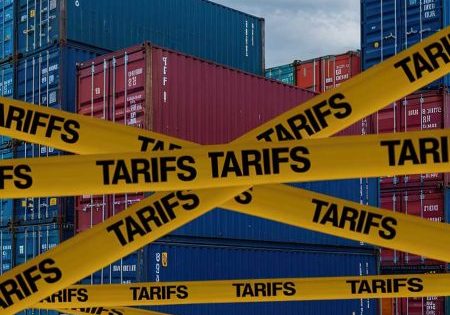by Semih Çalık
Hello to everyone,
I have received very positive feedback after my first two articles were published in the magazine. I sincerely thank everyone who shared what they read, contributed with their opinions and said, “Well done.”
Thanks to the feedback, I have found the courage to start a new series:
“Journey of the Lift World.”
In this series of articles, there will be six main topics in total, and I will write about how vertical passenger transportation is no longer just an engineering subject and how it is intertwined with several areas, from technology to marketing, from sustainability to user experience.
The First Stop: Veins of Modern Cities – Lifts
This title came into my mind during a lift symposium I attended recently. Until today, I have always come across the same definition and wanted you to hear from me what “lift” refers to.
The first thing you notice when you step into the crowd of cities is that people start moving vertically instead of horizontally. Lifts are silent vehicles that move up and down non-stop, sometimes to the 40th floor of a skyscraper and sometimes to the fifth floor of a shopping mall. However, these systems do not only carry people but also the rhythm of cities, the flow of time and even the vision of sustainability. In modern cities, lifts are no longer a necessity; they have become a part of life itself.
In the past, the most valued factors were structural safety and statics when constructing buildings. Today, structures born from the partnership of architecture and engineering are evaluated by the kind of life they harbor alongside their aesthetics or durability. Lift systems, as one of the most critical components of life, are positioned as veins that keep the pulse of buildings and manage human traffic in cities. Just like a heart pumps blood, lifts in modern buildings save time and resources by enabling people to move in the most efficient, safest and quietest way.
According to the report published by the United Nations in 2024, 57% of the world population live in cities. This rate is expected to reach 68% by 2050. Such an increase exceeds the horizontal expansion capacity of cities while making vertical architecture an inevitable solution. Therefore, for every new skyscraper, every mixed living project and every industrial facility, lift systems are not designed as a “comfort item” but as an “infrastructure necessity.”
In the shadow of this growing demand, a bigger issue is sustainability. At the beginning of the 21st century, lifts were talked about only with their transportation efficiency, while today, questions, such as how this efficiency is balanced with energy consumption and how they are optimized without leaving a carbon footprint, are reshaping the industry. Especially as part of the European Union’s Energy Performance of Buildings Directive (EPBD), which came into force in 2024, Energy Performance Certificates (EPC) have become mandatory for all buildings. These certificates classify the energy efficiency of buildings and aim to optimize energy consumption. Lift systems with a class-A energy label are not only environmentally friendly but also contribute to the value of the buildings.
What is this transformation based on? Today, the majority of the lifts used in modern cities are equipped with energy recovery systems (regenerative drivers). These systems recover the energy released when the lifts go down or if the load is light, and contribute to the general energy system of the building. This technology can reduce annual energy costs down to 20% especially in commercial buildings with high traffic. In addition, a serious difference is made, together with micro solutions such as LED lighting, control systems, that can switch to sleep mode and energy-friendly door motors.
Not only energy efficiency but also the user experience is at the heart of this evolution. Modern city people demand more than speed now. Lifts create the first impression of a building. The display, call button, voiced guidance or smell welcoming a person on the ground floor can affect the entire experience. Thus, architects and designers no longer address lift systems separately from the structure but as the structure itself. Each and every detail from material choice to acoustic features and from visual simplicity to accessibility solutions are considered. Especially, disabled-friendly solutions, control panels optimized for elderly people and touch-free call systems instead of touchscreens mark the point where human-centered engineering has come.
In modern cities, data has also become an important vein. Lift systems are not only mechanical now, but also operate as digital systems. Thanks to sensors ensuring real-time data transfer and remote monitoring systems, the performance, failure possibility and maintenance need of a lift can be predicted beforehand. This offers a great advantage in terms of both cost and safety. For example, in new-generation buildings in cities such as Tokyo, Singapore and Frankfurt, lifts operate integrated in automation systems: More cars are deployed in busy hours, and the system switches to low-energy mode automatically at night.
Behind these technological developments lies quite an important humane reason: increasing the quality of life — because each moment is valuable in a metropolitan area. The experience of an employee late for work, a mother going shopping and a hotel accommodating its guests can be determined by a few seconds of a lift journey. Therefore, engineering also means leaving an emotional mark alongside creating a physical solution.
Cities are growing, skyscrapers are rising and people do not want to compromise on time, comfort and aesthetics. At this point, lift systems shine as the invisible but indispensable veins of modern cities. In order for these veins to run healthy, technology, design and sustainability must find a common ground.
Today, 18 million lifts are operating actively around the world, and this number increases by 4%-6% every year. This growth brings along new sub-fields such as maintenance, modernization and digital integration in addition to manufacturing. As new cities arise, the lift industry transforms not only into a technical sector but also a cultural and strategic one.
Modern lifts no longer refer to carrying vehicles, they offer an experience, value and vision. Cities that can combine this vision with sustainability and technology will become more livable and be home to more conscious societies.
This consciousness is preparing us to the next stop in this journey: the future of sustainable vertical movement.
Get more of Elevator World. Sign up for our free e-newsletter.



